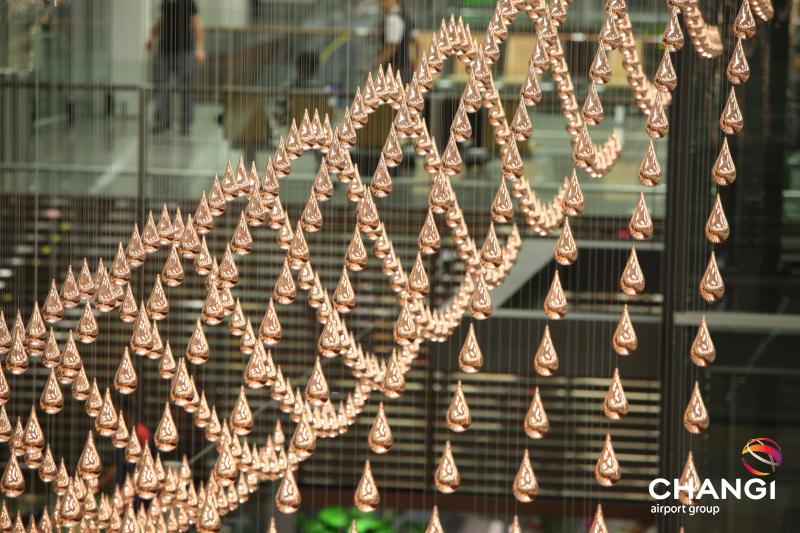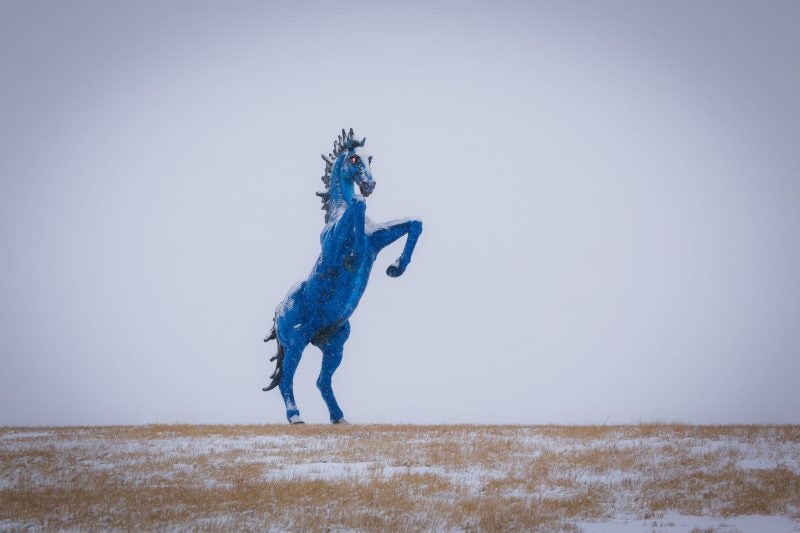
Until a few years ago, when people thought of airports, the words ‘cultural hub’ were not the first that came to mind. Recently, however, airports around the world have increasingly invested in hosting more cultural activities.
Following the footsteps of San Francisco and Amsterdam, in July Istanbul Airport inaugurated its museum with a temporary exhibition on Turkish artefacts.
Other airports – including Dallas, Bangkok and Copenhagen – have decided to commission well-known artists from around the world to design artworks.
We take a look at some of the world’s most interesting pieces of airport art.
Plein Air Port mural – San Diego International Airport, US
 Credit: Joey Herring.
Credit: Joey Herring.
How well do you really know your competitors?
Access the most comprehensive Company Profiles on the market, powered by GlobalData. Save hours of research. Gain competitive edge.

Thank you!
Your download email will arrive shortly
Not ready to buy yet? Download a free sample
We are confident about the unique quality of our Company Profiles. However, we want you to make the most beneficial decision for your business, so we offer a free sample that you can download by submitting the below form
By GlobalDataUnveiled yesterday, the Plein Air Port mural is the latest piece of art commissioned by the San Diego International Airport Art Programme.
The 44-metre-long art piece was painted by artist Aaron Glasson, a New Zealand native currently living in California, and will remain on display throughout the next year.
Combining pieces of the city’s landscape and airport design with abstract imagery, Glasson’s artwork is reflective of the site and its ecosystem. “You can see that Aaron’s time in the terminals influenced his artwork,” said San Diego County Regional Airport Authority President and CEO Kimberly Becker.
“The combination of shapes and iconic images compliment the airport and surrounding area by infusing vibrant colours along Admiral Boland Way.”
Established in 2006, the San Diego International Airport Art Programme aims at providing travellers with different types of artwork, from performing arts to contemporary exhibitions.
The Admiral Boland Way mural, where Plein Air Port is currently is situated, was established as a way for artists to have their work featured temporarily.
Slipstream – London Heathrow, UK
 Credit: Heathrow Airport.
Credit: Heathrow Airport.
Situated in the airport’s terminal 2, Slipstream is an artwork commissioned by Heathrow Airport to British sculptor Richard Wilson.
The piece – a 70-metre long aluminium sculpture weighing 77 tonnes – is suspended between two passenger walkaways, leaning on four structural columns for support.
Taking inspiration from the world of aviation, Wilson wanted Slipstream to represent the flight path of a Zivko Edge 540, a single-engine aerobatic plane.
To properly design the movement of an aerobatic plane, Wilson used aerospace technology, – including computer programming – as well as enlisting the help of structural engineers Price & Meyers.
“Slipstream is rooted in its location,” commented Wilson. “This work is a metaphor for travel, it is time-based work. It is art that moves in time and space coming from the past to the current, delivering different experiences at either end. Sensations of velocity, acceleration and deceleration follow us at every undulation of the form.”
The piece was commissioned in 2010 when the airport held an art competition calling international artists to envisage a piece that would reflect the new terminal’s volume and architecture.
“Heathrow is one of the few places where art, architecture and engineering come together in one space,” added Heathrow development director John Holland-Kaye.
Kinetic Rain – Changi Airport, Singapore
 Credit: Changi Airport.
Credit: Changi Airport.
Kinetic Rain is one of the most famous artworks inside Singapore’s Changi Airport, where is situated above terminal 1’s central escalators.
Made up of 1,216 bronze drops divided into two symmetrical parts, the sculpture’s droplets can take 16 different shapes, including that of an aeroplane, hot air balloon and dragon. Each shape is achieved through a mechanism of high precision motors, connected to the droplets via steel wires.
Moving through a 15-minute animated sequence, Kinetic Rain symbolises the fluid movements typical of flight as well as the airport community, that collaborates to provide positive experiences to travellers.
The sculpture was designed in 2010 by German design studio ART + COM, while manufacturing and installation were done by engineering company MKT.
ART + COM’s works include other kinetic artworks, including The Shapes of Things to Come kinetic sculpture, which is located at Munich’s BMW Museum, as well as the Manta Rhei sculpture, situated in Berlin.
Woven Wonders of the Reef – Brisbane Airport, Australia
 Credit: Brisbane Airport.
Credit: Brisbane Airport.
Inspired by the Queensland Great Barrier Reef, Woven Wonders of the Reef was unveiled in October 2015, as part of Brisbane Airport’s owner Brisbane Airport Corporation’s AUD 30m Skygate precinct expansion.
“Major art pieces can really transform public spaces and we’ve found that the millions of passengers and visitors travelling to and through the airport every year really appreciate and engage with the artworks on display,” said Brisbane Airport Corporation CEO Julieanne Alroe.
The piece was commissioned to Cairns-based artist Brian Robinson, who took inspiration from his own childhood.
“In the far north, Torres Strait Islander people weave coconut palm leaves to make shapes including the Angel fish,” explained Robinson.
“Woven Wonders of the Reef represents the many colourful schools of fish species in the waters around north Queensland. It offers children the experience of interacting with the Great Barrier Reef, one of the richest, most complex and diverse systems in the world, without getting their feet wet.”
Mustang – Denver International Airport, US
 Credit: Denver International Airport.
Credit: Denver International Airport.
With a height of almost 10 metres, Mustang, a huge blue horse with flaming red eyes, is one of the most bizarre artworks situated in airports.
Situated outside of Denver International Airport, on Peña Boulevard, the statue is also known as Blucifer by the city residents.
The artist, Luis Jiménez, was inspired both by Mexican muralists, as well as the bright colours of his youth, spent in his father’s sign-making company.
According to online website CPR News, there have been a series of conspiracy theories that revolve around the blue horse. One of the most interesting focuses on its creator, Luis Jiménez.
Jiménez died in 2006 when a part of the sculpture came loose and fell, severing the artist’s leg and resulting in him bleeding to death. In 2009, Jiménez’s studio completed the artwork, 15 years after its commission.
The horse’s eyes, made up of LED flood lights, have been a major focal point for people.
According to Jiménez, Susan, the particular way in which he designed the eyes come from a real-life episode.
Susan told CPR that once Jiménez was home alone when he saw a pair of eyes. At the beginning, he thought it was someone trespassing but then realised it was Black Jack, the horse which was the model for Mustang.
“And so [do the eyes] have anything to do with that incident and this kind of you’re afraid of something but then it’s OK [because you realize] it is familiar,” she told the outlet. “I don’t know. But the eyes do not have any evil intent whatsoever.”



